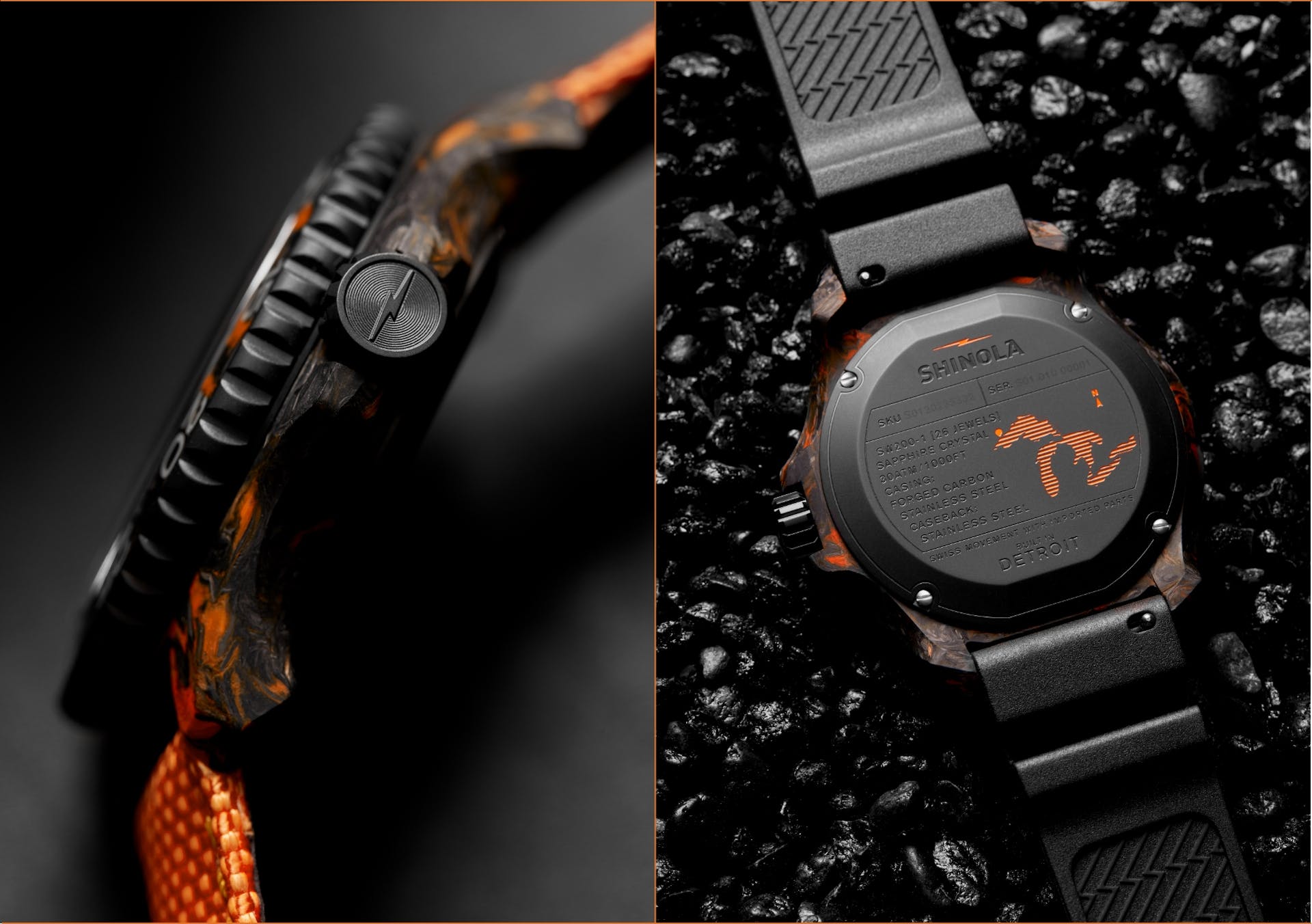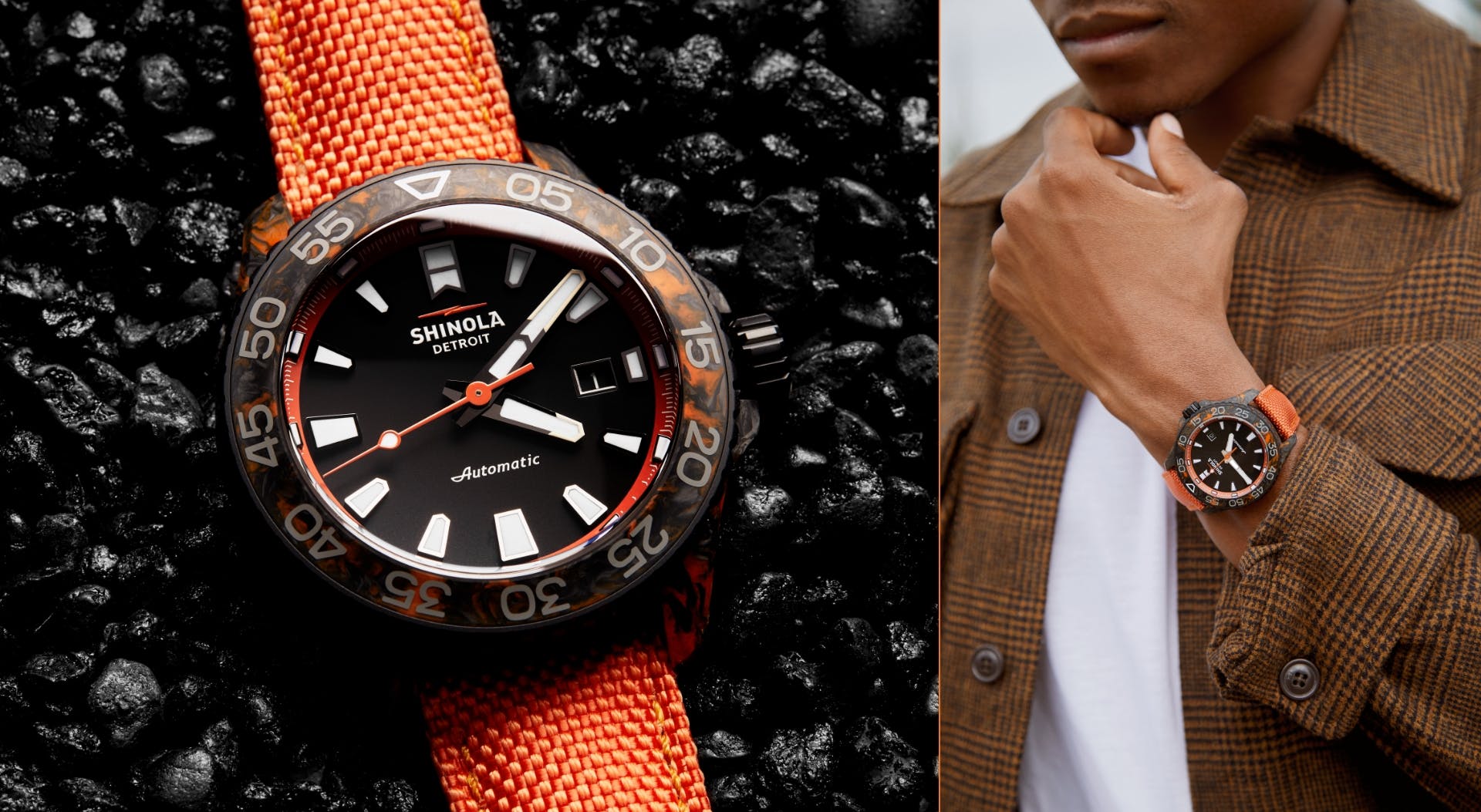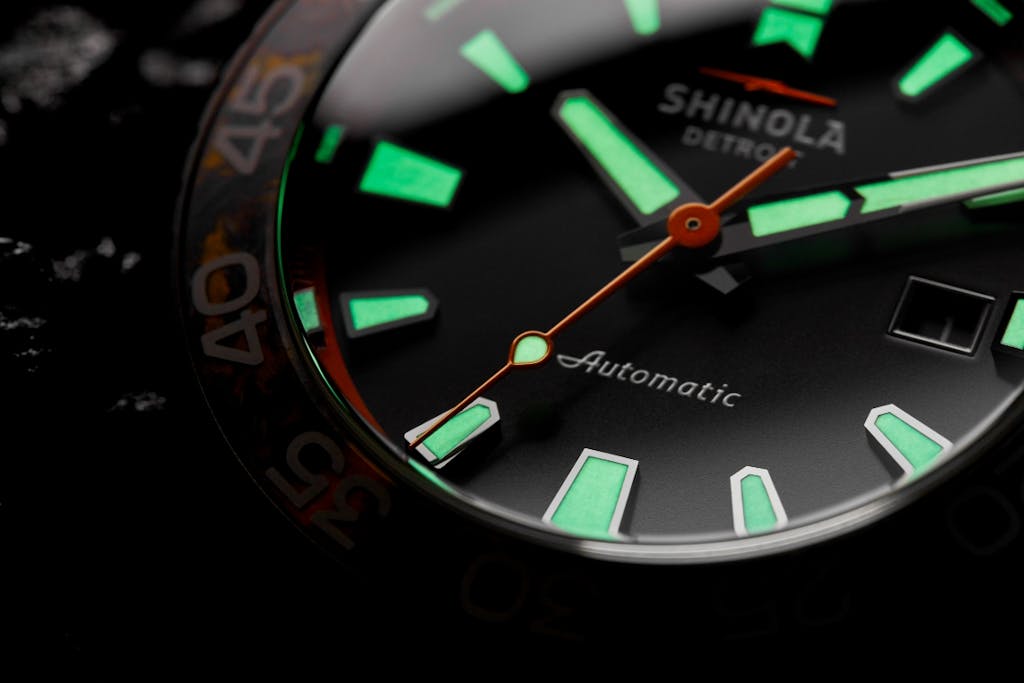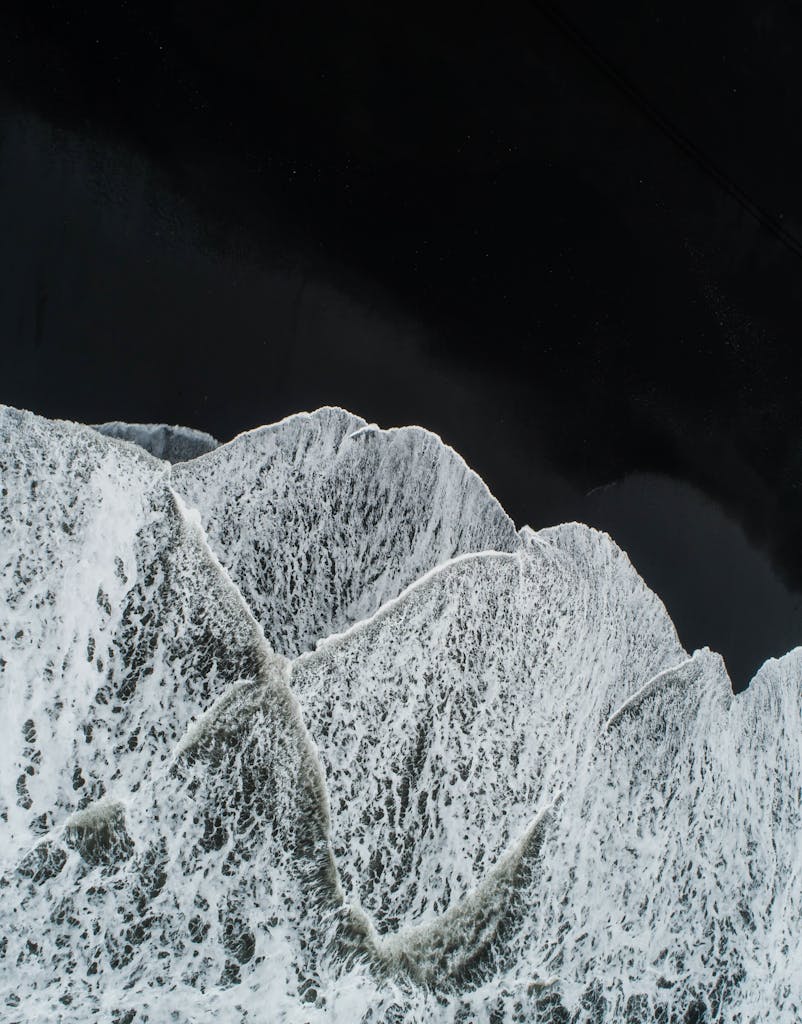Forged Carbon Monster is the next piece in the series of dive watches by Shinola — proof things that last are created under intense pressure.
The inner workings of a timepiece like Shinola Detroit’s new Forged Carbon Monster Automatic Dive Watch are among the most delicately complex examples of craftsmanship on the planet.
To make a product like this, an assemblage of small parts needs to be choreographed with care. The goal is to ensure second-by-second precision among an interconnected network of components capable of keeping perfect time over a lifetime of use.
Just as important is the watch case in which the critical pieces operate.
Shinola Detroit has scoured the world for materials that check off all the requirements of a world-class case. Strength, weight, sustainability, and beauty all play a role in decision making. Sometimes, a simple arrangement of atoms can determine if a case design is up to the challenge.
Take, for example, titanium used on watches like the Black Blizzard. This metal alloy is as strong as steel, but much lighter. Or consider TR-90 resin, a durable polymer used to craft Detrola cases that are dynamic in color yet durable in design. Then there’s the ocean-bound plastic cases of Sea Creatures, crafted from #tide® brand material that’s upcycled from water bottles and other trash scattered on island archipelagos.
This year, Shinola is taking a giant leap forward by introducing forged carbon composite into its collection of watch cases. This cutting-edge material was originally engineered by Dr. Paolo Feraboli for aerospace giant Boeing, and first commercially applied to Lamborghinis and golf clubs.
Forged carbon is just making its way into fashion and consumer goods. It provides ideal protection for a dive watch needs to stand up to intense pressure.

BEFORE THE FORGE
Many are familiar with carbon fiber, but forged carbon is lesser known. Forged carbon actually takes ultra-strong, ultra-light carbon fiber threads and compression molds them with resin to make an even stronger material.
Here’s how the extreme engineering behind this process works.
When a natural object is super-heated, it carbonizes. Its atoms vibrate, expelling anything that isn’t carbon, until only the carbonized item remains. The atomic makeup is rearranged and purified, much like the way firewood becomes charcoal in your bonfire pit after expelling gases, tar, ash, and smoke. Do this process in a vacuum, and you have oxygen-less combustion where the atoms reorient themselves but don’t burn.
That’s how carbon fibers are created: Strands of organic polymers are superheated in a vacuum, rearranging their particles. The non-carbon atoms leave. What’s left is much lighter than before, with tightly interlocked atom chains aligned in puzzle-piece perfection. Carbon fiber is a stronger version of the heavier fiber it once was.
But a single fiber, no matter how strong, isn’t much on its own. To bend, shape, and create with carbon fiber, many strands are threaded together to create what’s called a carbon fiber tow. Tows are woven, much like cotton or yarn, to create sheets, and injected or molded with resin to create truly exotic goods, such as paneling of the International Space Station.
After a long history of use in aeronautics and satellites, carbon fiber entered the world of consumer goods and can be found in everything from snow skis to sunglasses.
The application has limits. Fibers, by nature, are ideal for making sheets that can be layered, like a super-strong carbon fiber sandwich. It can’t however, be effectively manipulated to create a 90-degree angle, among other things, and this rules out ruling out a host of shapes and applications.

ENTER FORGED CARBON
This is where forged carbon steps in. Instead of weaving the carbon fiber tow, it’s instead chopped into very short pieces and mixed with resin. Forging takes place under immense heat and pressure, with the molten mix hardened and molded by a hydraulic press into a specific shape—like a watch case.
Half a million carbon fibers are in every square inch of forged carbon. It may weigh as much as a plastic polymer. But it’s massively stronger. Because there’s no controlling how the carbon fiber tow will align, every piece has a marbled pattern unique to itself.
Shinola’s Forged Carbon Monster Automatic is one of only a few watches made with the material. Like others in the Monster Automatic series, this new entrant surpasses ISO-6425, the international dive watch standards. It’s water resistant up to 1,000 feet and contains an iron inner housing protecting the movement from magnetic disruption.

UNDER THE SURFACE
The Forged Carbon Monster’s marbled, granite-like finish is a trademark of the cutting-edge material it is made of. It is also reminiscent of the dark sands of the Black Beach in Silver Bay, Minnesota, where nature is reclaiming a Lake Superior shoreline once threatened by industrial pollution.
The legendary Black Beach is surrounded by rust-orange cliffs. The dark sand and bright stone bear witness to the Great Lakes’ long industrial history. Taconite, a byproduct of iron mining, is the source of the shore’s strange color. Iron mining was so crucial to the area’s industry that entire townships in Michigan’s U.P. were named for it.
Environmentalists decades ago lobbied to end taconite tailings being deposited in the lake. The Black Beach is now a public park and a unique testament of what the Great Lakes have given us. It is also a reminder that In the hunt for new materials comes the responsibility to innovate mindfully and cherish what’s worth protecting.
That’s why, etched on the case back of the Forged Carbon Monster Automatic Dive Watch, you’ll find a list of its impressive specifications—and a map of the Great Lakes we at Shinola are lucky to call home.
